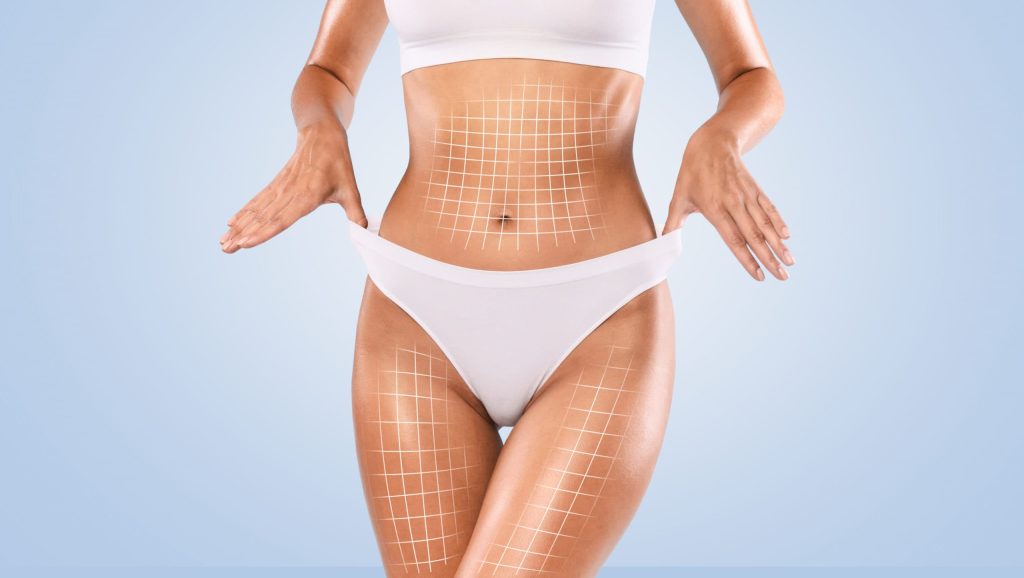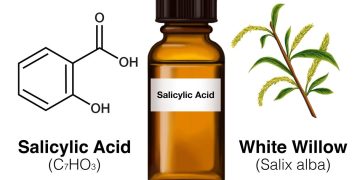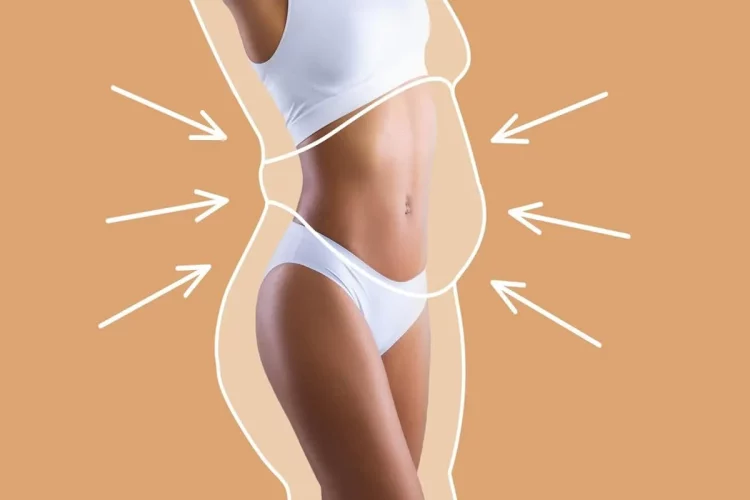In recent years, non-surgical body contouring treatments like CoolSculpting have gained significant popularity as alternatives to traditional liposuction. While both CoolSculpting and liposuction aim to reduce stubborn fat and sculpt the body’s contours, they are fundamentally different in their approaches. The question remains: can CoolSculpting truly replace liposuction, or are the two treatments complementary? This article explores the differences between these two methods in terms of safety, effectiveness, ideal candidates, costs, recovery time, and long-term results, helping you make an informed decision.
What is CoolSculpting?
CoolSculpting, also known as cryolipolysis, is a non-invasive, FDA-approved procedure that uses controlled cooling to target and freeze fat cells. During a CoolSculpting session, a specialized device is applied to the skin in the target area. The device uses suction to pull the fatty tissue into cooling panels, which freeze and destroy fat cells without affecting surrounding tissues. Over time, the body naturally eliminates the dead fat cells, leading to a more contoured appearance.
CoolSculpting is typically used to treat areas of the body with stubborn fat that doesn’t respond well to diet and exercise, such as the abdomen, thighs, flanks (love handles), chin, and back. The procedure is designed for individuals who are near their ideal weight but struggle with localized fat deposits.
What is Liposuction?
Liposuction, on the other hand, is a surgical procedure that physically removes fat from specific areas of the body. During the procedure, small incisions are made in the skin, and a cannula (a thin tube) is inserted into the fat layer. The cannula is then used to suction out excess fat, contouring the area into a more desirable shape.
Liposuction is more invasive than CoolSculpting and requires general or local anesthesia, depending on the extent of the procedure. It is often used for larger fat deposits or to treat areas where fat is more fibrous or resistant to non-invasive methods. Liposuction can be used on areas such as the abdomen, thighs, arms, neck, and back.
How Do CoolSculpting and Liposuction Compare in Terms of Safety?
CoolSculpting:
CoolSculpting is considered a safe procedure with minimal risks because it is non-invasive. Since the treatment doesn’t require any incisions, general anesthesia, or needles, the risk of infection or complications is much lower than with surgery. Common side effects include temporary redness, swelling, bruising, or tingling in the treated area, but these usually resolve within a few days or weeks. There is also a rare but possible side effect called paradoxical adipose hyperplasia, where fat cells in the treated area actually increase in size. However, this is uncommon and usually occurs in men.
Liposuction:
Liposuction is a more invasive procedure and, as such, carries higher risks. These risks include infection, blood clots, anesthesia complications, fluid imbalances, and skin irregularities. Because it involves making incisions, there is also a risk of scarring. However, when performed by a qualified and experienced surgeon, the risks can be minimized. The procedure requires more careful planning and post-operative care to avoid complications, including the potential for contour irregularities or the need for follow-up surgeries.
In terms of safety, CoolSculpting has the advantage due to its non-invasive nature. However, liposuction may be more suitable for individuals who have larger amounts of fat to remove or specific areas of fat that are more resistant to non-surgical treatments.
How Effective Are CoolSculpting and Liposuction?
CoolSculpting:
CoolSculpting is effective at reducing fat in targeted areas, but the results are gradual. It typically takes about 2 to 4 months to see the final results as the body naturally processes and eliminates the frozen fat cells. Patients can expect a reduction in fat of about 20% to 25% in the treated area after a single session. However, multiple sessions may be required for more significant fat reduction or for treating multiple areas.
While CoolSculpting is effective for those looking to treat localized areas of stubborn fat, it is not a weight-loss solution and is best suited for people who are already at or near their ideal weight. It is also important to note that CoolSculpting does not provide the same dramatic results as liposuction, especially in cases where a larger amount of fat needs to be removed.
Liposuction:
Liposuction, on the other hand, provides more immediate and dramatic results. Because the fat is physically removed, patients see an instant reduction in the size of the treated area. Liposuction is also more effective at removing larger amounts of fat, making it the better option for individuals with more significant fat deposits or those seeking more extensive body contouring.
While liposuction can offer more dramatic results, it is also a more invasive procedure that requires recovery time. In general, liposuction provides a more permanent solution to fat reduction compared to CoolSculpting. However, liposuction does not prevent future weight gain, and patients may need to maintain a healthy lifestyle to preserve their results.
Who Are the Ideal Candidates for CoolSculpting and Liposuction?
CoolSculpting:
The ideal candidate for CoolSculpting is someone who is at or near their ideal weight but has stubborn pockets of fat that don’t respond well to diet and exercise. CoolSculpting is not designed for significant weight loss, so it is not suitable for those who are obese or have a large amount of excess fat. CoolSculpting is best suited for individuals who want to target localized fat areas like the abdomen, love handles, inner thighs, and chin.
CoolSculpting is also a good option for those who prefer a non-surgical approach and are not looking for immediate results. It is ideal for people who are looking for a gradual improvement in body contour with minimal downtime.
Liposuction:
The ideal candidate for liposuction is someone who has larger fat deposits in specific areas of the body and wants to achieve more dramatic, immediate results. Liposuction is best suited for individuals who are generally healthy, have good skin elasticity, and are not significantly overweight. Liposuction can treat larger and more fibrous fat deposits that may not respond well to non-invasive treatments like CoolSculpting.
It is important to note that liposuction is not a weight-loss procedure and is not recommended for people who are severely overweight or obese. Liposuction is also best for individuals who are committed to maintaining a healthy lifestyle after the procedure to preserve the results.

Cost Comparison: CoolSculpting vs. Liposuction
CoolSculpting:
The cost of CoolSculpting varies depending on the size of the treatment area, the number of sessions required, and the geographic location of the provider. On average, the cost for a CoolSculpting treatment ranges from $2,000 to $4,000 for a single area. Since multiple sessions may be necessary, the total cost can increase.
Liposuction:
Liposuction is generally more expensive due to the invasive nature of the procedure, the need for anesthesia, and the surgical team involved. The cost of liposuction typically ranges from $3,000 to $10,000, depending on the number of areas treated, the complexity of the surgery, and the surgeon’s experience. Additionally, the cost of anesthesia, facility fees, and post-operative care can add to the total cost.
While CoolSculpting may be more affordable upfront, it may require additional sessions to achieve the desired results, making the cost higher in some cases. Liposuction, while more expensive, may provide more immediate and long-lasting results with a single procedure.
Recovery Time: CoolSculpting vs. Liposuction
CoolSculpting:
One of the main advantages of CoolSculpting is its minimal downtime. Since it is a non-invasive treatment, patients can return to their normal activities immediately after the procedure. Some people may experience mild redness, swelling, or bruising in the treated area, but these side effects typically resolve within a few days. There is no need for anesthesia or recovery time, making it an attractive option for those with busy schedules.
Liposuction:
Liposuction, on the other hand, requires a significant recovery period. Depending on the extent of the procedure, patients may need to take several days to a week off from work and avoid strenuous activities for several weeks. There is also the need for compression garments to be worn post-surgery to help reduce swelling and improve the final results. Full recovery can take several weeks to months, and patients may experience bruising, swelling, and discomfort during the recovery period.
Long-Term Results: CoolSculpting vs. Liposuction
CoolSculpting:
The results of CoolSculpting are permanent in the sense that the fat cells that are destroyed do not regenerate. However, it is important to maintain a stable weight and healthy lifestyle, as remaining fat cells can still grow if weight is gained. Additionally, multiple sessions may be necessary to achieve the desired results, and results can take several months to fully manifest.
Liposuction:
Liposuction provides more immediate and dramatic results, and the fat cells that are removed do not grow back. However, it is still important to maintain a stable weight, as new fat cells can accumulate in other areas of the body. Liposuction results are considered more permanent compared to CoolSculpting, especially when a healthy lifestyle is maintained.
Conclusion: Can CoolSculpting Replace Liposuction?
While CoolSculpting and liposuction are both effective treatments for body contouring, they are not interchangeable. CoolSculpting is a non-invasive, lower-risk procedure that is ideal for individuals with small, localized fat deposits. It offers a gradual, natural improvement with little downtime. Liposuction, on the other hand, is a surgical procedure that provides more immediate and dramatic results, especially for individuals with larger amounts of fat to remove. It carries higher risks and requires a longer recovery period but is better suited for those seeking significant fat reduction.
Ultimately, the choice between CoolSculpting and liposuction depends on the individual’s goals, the amount of fat they wish to target, their tolerance for invasiveness, and their preference for recovery time. It is always important to consult with a qualified professional to determine the best option for your body contouring needs.












































